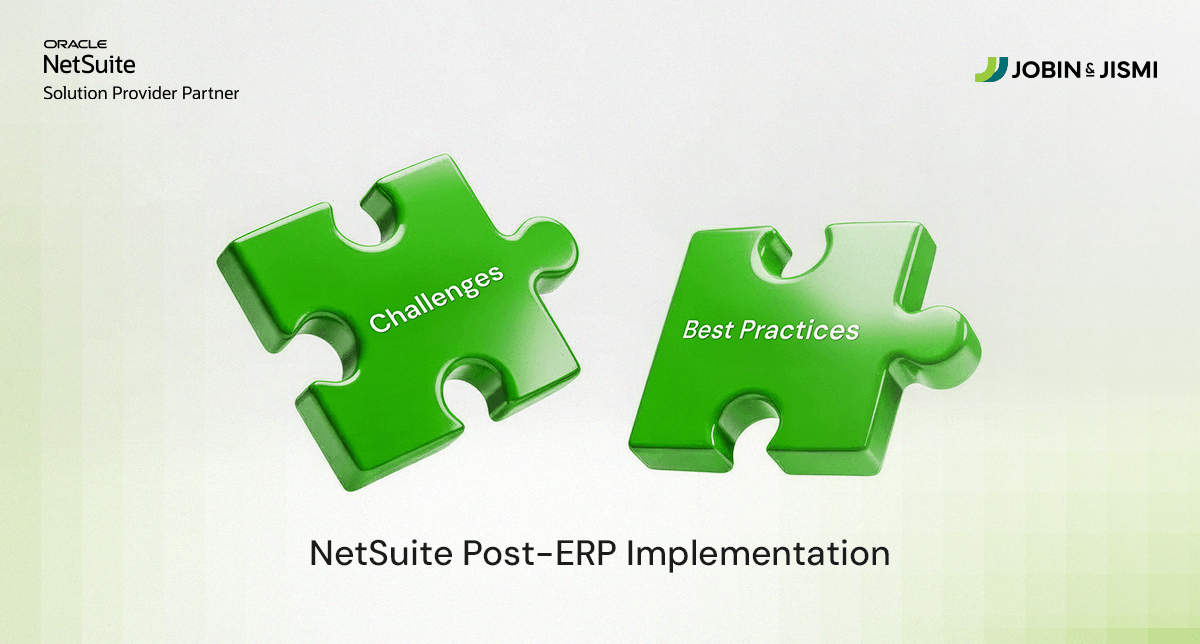NetSuite + SuiteCommerce Integration: ERP-eCommerce Connectivity

With the stiff competition in the digital landscape today, operational agility and customer experience are not merely nice-to-haves; they are essential for survival and growth. NetSuite and SuiteCommerce together create a single unified ecosystem that connects the front end of a digital commerce system with back-end enterprise operations, providing a powerful ERP system and native eCommerce solution. Such integration not only provides a smooth workflow, but it also completely changes how businesses work, scale, and compete.
Silos create friction at every level. When ERP and eCommerce systems do not speak the same language, data becomes fragmented, manual work increases, and customers face delays and inaccuracies. Gradually, these inefficiencies hamper profitability, limit scalability, and hinder strategic decision-making.
By creating a single ERP-eCommerce ecosystem through the integration of NetSuite, organizations eliminate these bottlenecks. The result is increased operational efficiency, improved customer experience, and faster business growth. Most importantly, integration is not just a technical upgrade. It is an edge that strategically allows businesses to outpace their competitors in speed, accuracy, and adaptability.
Why Integration Matters Now
A. Market Pressures Driving Change
A modern customer expects seamless, personalized, and reliable interactions across every touchpoint. Whether they’re purchasing online, in-store, or via a hybrid channel, customers want product availability, accurate pricing, and speedy delivery. If businesses cannot deliver, they stand to lose their market share to others that can.
Speed and accuracy are not optional. They are what enable market leadership in a time when digital-first competition can pivot rapidly. Integrated operations give a long-lasting competitive advantage, ensuring all the departments operate based on a single source of real-time data.
B. Cost of Disconnected Systems
Disconnected systems introduce hidden costs that are rarely visible in financial statements until they become too large to ignore. Manual reconciliation between ERP and eCommerce platforms consumes valuable staff time. Duplication of effort across finance, operations, and customer service undermines productivity and delays decision-making.
Inventory mismatches between the systems create stockouts, overselling, and delays in fulfillment, thereby costing revenue and eroding customer trust. Delayed financial closes make it harder for executives to understand what is happening on the ground and respond to new opportunities or mitigate threats.
In short, siloed systems restrict the growth capability as they cause slower operations, higher costs, and lower competitiveness
NetSuite + SuiteCommerce: The Strategic Solution
A. Understanding the Integration Landscape
NetSuite eCommerce interface unites front-end activities with back-end operational processes to build a single platform for operational simplicity. Being a native solution in NetSuite, SuiteCommerce avoids complexities and limitations posed by third-party connectors. The direct connection means fewer integration points and long-term stability.
Speaking of other integration options, though, we certainly do have them. Many businesses also use Shopify, Magento, BigCommerce, or WooCommerce with NetSuite. Platform-agnostic integration options enable companies to retain their preferred eCommerce front end and reap the benefit of NetSuite's ERP capabilities.
B. Strategic Business Value Proposition
A single data architecture provides for a single source of truth for customer, inventory, and financial data. Such synchronization eliminates redundancies, ensures accuracy, and enhances operational decision-making.
Manual processes are replaced with automated workflows throughout the order-to-cash procedure. From order entry to invoicing, tasks that humans used to perform are now accomplished instantly and without errors.
Decision-making in real-time becomes possible with business intelligence accessed live from the central platform. Executives judge sales trends, inventory levels, and financial performance as they occur, not weeks later.
A scalable infrastructure builds the foundation for sustainable growth. Whether increasing product lines, entering new markets, or adding sales channels, integrated systems adapt quickly without obliging them to undergo an overhaul.
C. Technology Foundation
Built on a cloud-first architecture, SuiteCommerce and NetSuite offer an added level of scalability, global access, and reliability. It removes the requirement for heavy on-premise infrastructure and enables easy updates.
API-driven connectivity ensures flexibility. Businesses can integrate with third-party systems, payment gateways, logistics providers, and marketing platforms without ever sacrificing stability.
Enterprise-level security and compliance protect sensitive customer and financial data while also meeting regulatory requirements such as GDPR, CCPA, and PCI DSS.
ROI & Financial Impact Analysis
A. Quantifiable Gains
Cost Reduction in Operations
1. Eliminating manual data-entry operations reduces labor costs and human mistakes.
2. Simplified architecture reduces IT maintenance and integration troubleshooting.
3. Lower rate of errors results in reduced cost of corrections and customer service interventions.
Revenue Enhancement
1. Accurate inventory management prevents overselling and sales lost to stockouts.
2. Faster processing and fulfillment improve cash flow and customer satisfaction.
3. Customer retention and repeat purchases grow through improved customer experiences.
B. Investment Framework During Implementation
A full understanding of Total Cost of Ownership (TCO) includes licensing, implementation services, customization, training, and support. Although the upfront cost might seem high, the vast majority of mid-market organizations find a break-even point in 12 to 18 months due to cost savings and an increase in revenue.
The economies of scale favor the business during expansion. The cost of integration goes down as a proportion of revenue, making it more profitable in the long run.
C. Risk Mitigation Value
Compliance assurance is at the core of all considerations. Automated tax calculations, standardized reporting, and audit-ready documentation reduce the risk of non-compliance and possible sanctions.
Operational continuity improves due to the low reliance on manual processes that can be disrupted by staff turnover or simple error.
Centralized security procedures safeguard sensitive data, reducing the risk of expensive breaches.
D. Competitive Advantage Metrics
1. Time-to-Market: Faster time-to-market for products and promotional campaigns ensures that a business can capitalize on a current trend before its competitors do.
2. Customer Acquisition Cost: Seamless shopping experiences improve conversion rates, reducing the costs of acquisition.
3. Market Responsiveness: An integrated system makes it easier to adapt to market changes, customer demands, and fluctuations in the supply chain.
Implementation Strategy for C-Suite Leaders
A. Integration Approach Options
Native SuiteCommerce
Best for organizations that require a completely integrated platform under one vendor. Although large upfront costs may be involved, long-term complexity is reduced, while native functionality minimizes integration risks.
Middleware (Celigo, Boomi)
Ideal for businesses running a multi-platform environment. It provides flexible connections between NetSuite and other eCommerce platforms. Ongoing licensing costs are predictable, and implementation times are shorter than custom builds.
Direct API Integration
Best for companies with unique requirements in their day-to-day operations or heavily customized NetSuite environments. The development complexity can be quite high, while this method affords the fullest possibilities of alternative configurations, with costs depending on the scope and configuration needs.
B. Executive Decision Framework
1. Assessment of Business Requirements: Ensure the integration aligns with operational needs and strategic plans.
2. Resource Allocation: Decide whether internal teams can manage the implementation or if external specialists are required.
3. Timeline Considerations: Speed of market introduction should be balanced against the necessity for robust testing and adequate training.
4. Risk Assessment: Evaluate all technical, operational, and business continuity risks before approval.
C. Critical Success Factors
1. Executive Sponsorship is required to provide alignment across departments and secure resources.
2. Cross-functional Collaboration between IT, Operations, and Finance will prevent the creation of new silos and further provide for end-to-end process improvements.
3. Change Management will be required. Staff need to be trained and supported to learn their new workflows and responsibilities.
4. Vendor Partnership selection should ensure the selected partners have a proven track record for both NetSuite integration and eCommerce integration.
For CFOs, C-suite executives, and other senior leaders, the decision to integrate NetSuite with SuiteCommerce is more than a technology investment. It is a strategic initiative that aligns operational efficiencies with customer experience, with measurable financial returns, fortifying long-term competitive strength.
Integration is the key to sustained growth in a marketplace that rewards speed, precision, and flexibility. The faster the shift is taken, the faster the organization will feel the benefits of reduced cost, improved revenue, and stronger customer loyalty.
For organizations that want to rethink their operations, the right place to start is with a strategic integration evaluation. Identify the inefficiencies in place. What are the ROI opportunities presenting themselves? What type of integration fits better with your long-term goals? Businesses that act right now will hold the key to tomorrow's markets.
on LinkedIn




